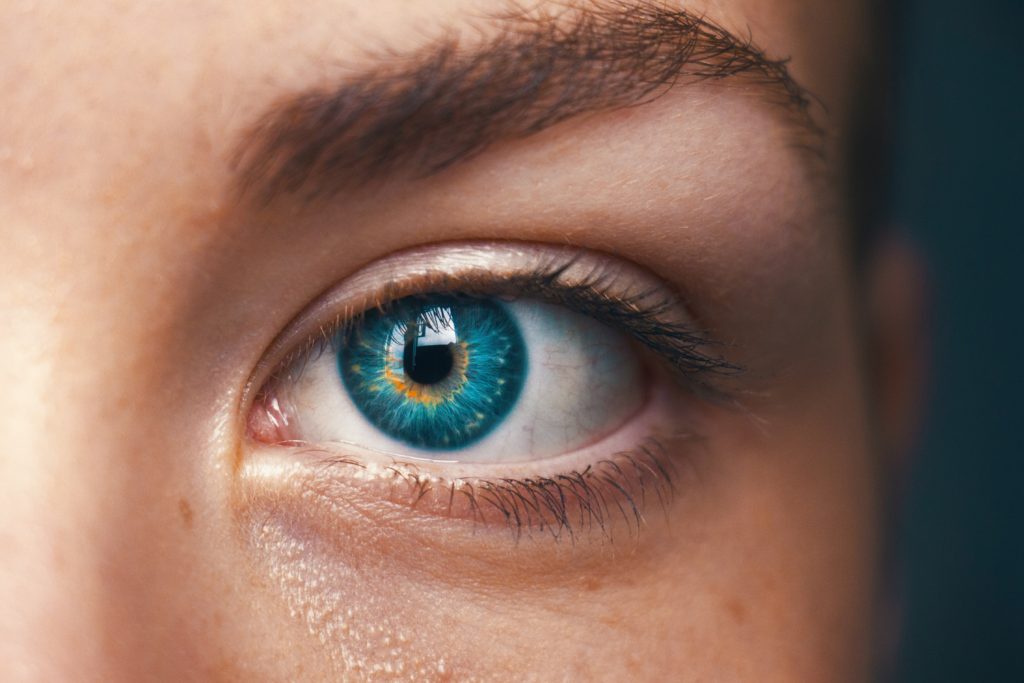
It’s never too late to start taking care of your eyes.
There is much you can do in this regard, from creating good habits, such as wearing sunglasses when it’s sunny to making regular appointments with your local ophthalmologist. You can encourage your family to do the same, and you can help them in other ways, such as unglueing your kids from screen time.
You should also remind yourself of the various eye conditions that can affect you as you age. By recognizing the signs of these eye conditions at an early stage and by taking steps to remedy them, you will do much to protect both your eyesight and your family’s long-term eye health.
We have listed some common eye conditions below.
#1: Chronic Uveitis
Uveitis is an inflammation of the middle layer of the eye. It can affect one or both eyes and people of all ages can experience it. Possible causes of uveitis can include eye injury or infection, although a number of autoimmune conditions have also been linked to uveitis. These include Chron’s disease, rheumatoid arthritis, and psoriasis.
Signs of uveitis include:
- Eye pain
- Eye redness
- Blurred vision
- Sensitivity to light
- Floaters in the field of vision
- Decreased vision
If you recognize the signs of uveitis you should see your doctor or ophthalmologist. This is because the problem can become worse, leading to other eye conditions such as cataracts and glaucoma. It could also lead to vision loss. This disorder can be rectified with chronic uveitis treatments so the earlier you seek help, the better.
#2: Cataracts
The cloudy areas that can form in the eye lens are referred to as cataracts. As a result of this condition, you will be unable to see as clearly as people do without cataracts, and this is because the cloudy patches can inhibit your vision. Over time, these patches can get bigger and cause more vision problems, and eventually, cataracts can lead to blindness.
The formation of cataracts happens over time so you might not recognize them straight away. Genetic disorders can increase your risk of cataracts, as can other medical conditions, including glaucoma, although this can be helped through alternative treatments like using CBD oils UK.
Signs to look out for include:
- Clouded vision
- Difficulty seeing at night
- Seeing halos around lights
- A faded appearance to colors
- Lights becoming too bright or glaring
Regular eye exams will alert your ophthalmologist to cataracts so you should make regular appointments. You should also make an appointment if you notice any of the signs we listed above. During the early stages of cataracts, antiglare glasses and magnifying lenses can help you with your vision. You might also be recommended to undergo laser eye surgery that is carried out in clinics like SharpeVision (pop over to this site), as much of your vision can be restored after the procedure.
#3: Dry Eyes Syndrome
When your tear ducts fail to provide adequate lubrication for your eyes, you might be affected by dry eye syndrome. Another name for this condition is keratoconjunctivitis sicca, and the symptoms are similar to another common eye condition known as blepharitis.
Certain medical conditions can cause a decrease in tear production, including rheumatoid arthritis and thyroid disorders, and aging can also be a cause. The problem is often exacerbated when starting at a computer screen for a long time without any breaks or when sitting in an air-conditioned room. If you work in an office where this is happening daily, it could be exacerbated by clogged air ducts pushing out dust and other build-up which can get into your eyes. Your manager may contact Pure Air for all your air duct cleaning needs in MD, D.C. and Virginia, however, if you are not based in this area then they will need to go for a local company that can come out quickly, you can then see if that makes any difference when it is on.
Signs of this condition include:
- Eye redness
- Light sensitivity
- Eye fatigue
- Blurred vision
- A stinging sensation in the eyes
- Mucus in or around the eyes
- Trouble wearing contact lenses
Thankfully, this condition can be treated. Gels, ointments, and other medications can be prescribed to you by your doctor and some can be bought over the counter at your local pharmacy or from an online pharmacy depending on what you need. A warm compress over your eyes can help too, and the FDA has also approved a number of devices that can offer temporary relief from dry eyes. As a more permanent solution, surgery might be recommended to you, depending on the severity of the condition. Click on the following link to get a more informed understanding of the range of dry eye treatments that are available.
Lifestyle changes can also help, so to alleviate the symptoms, take regular breaks away from your computer screen, and rest your eyes often. Remembering to blink will also help, as will avoiding places where there is a lot of airflow.
Finally
Caring for your eyes is important for the sake of your long-term vision so do what you can to take care of your eye health, and educate yourself further. We have only listed a few common eye conditions here but there are more useful articles around our website, so browse our pages for further information.
For further advice, speak to your ophthalmologist. They will give you advice on preventing and treating a wide range of common eye conditions, so never forego the need for a regular eye exam.